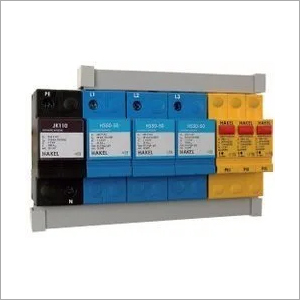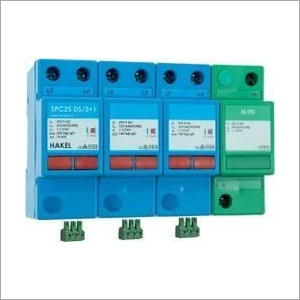- Home Page
- Company Profile
-
Our Products
- Signal System Protection Arresters
- Printed Circuit Board
- Stainless Steel Arrestors
- MS Protector Full SCH
- Master Slave Control Circuit Board
- Electric Surge Protection Equipment
- Spark Gap Switch
- Surge Protector
- Linksys Router
- Surge Protection Control
- Surge Protection Circuit Boards
- Data Protector Switch
- Data Protector Switch Board
- Surge Protector Circuit
- Data Line Transient Protector
- Data Protector Arresters
- Data Protector
- Telecom Co-axial SPD
- Telecom Surge Protection Device
- Surge Protection Devices
- Surge Protection SPD
- Solar Photovoltaic SPD
- Electric Coaxial Surge Protector
- Electrical Surge Protection Device
- Industrial Surge Protection Devices
- High Voltage Surge Protection Arrester
- Electric Circuit Boards
- Power Surge Arrester
- Power Arrestors
- Surge Arrester
- Lightening Arrestors Spark GAP
- Arrestors Plug
- Arrestors Power
- Lightning Arrester
- Protection Arrestors
- Arrester -
- Arrestors -
- Lightning Arresters Upto 1000 V
- Surge Protection Unit
- Lightning Arrester Unit
- Lightning Surge Protector
- Surge Switch
- B100 Lightning Arresters
- PIV12,5-275 Lightning Arresters
- PIV12,5-440 Lightning Arresters
- PIV-850 Lightning Arresters
- PIV12,5-275 DS Lightning Arresters
- PIV12,5-440 DS Lightning Arresters
- PIV12,5-150 Lightning Arresters
- PIV12,5-150 DS Lightning Arresters
- PIV12,5-75 Lightning Arresters
- PIV12,5-75 DS Lightning Arresters
- HS50-50 Lightning Arresters
- HS100 Arresters
- B50 Arresters
- HS55 Lightning Arresters
- Lightning Arrester Surge Protector
- HCS/3 0 Lightning Arresters
- HCS/3 0 DS Lightning Arresters
- HCS/3 1 Surge Arresters
- HCS/3 1 DS Lightning Arresters
- JK110 Lightning Arresters
- HG150 Lightning Arresters
- HZ110/3 0 Arresters
- PIV12,5-275/1 1 Lightning Arresters
- PIV12,5-275 DS/1 1 Lightning Arresters
- HS50-50/3 0 Lightning Arresters
- Arresters For Protection Of Signal Systems
- Surge Protection Devices DTB
- Surge Protection Devices DTB 1/12 /L
- DTB 1/48 /L Surge Protection Devices
- DTB 1/T /L Surge Protection Devices
- DTB 1/6 Surge Protection Devices
- DTB 1/24 Surge Protection Devices
- DTB 1/T Surge Protection Devices
- DTB 1/24 /R Surge Protection Devices
- DTB1/AR Surge Protection Devices
- DTB1/ART Surge Protection Devices
- DTE 1/6 Surge Protection Devices
- DTE 1/12 Surge Protection Devices
- DTE 1/24 Surge Protection Devices
- DTE 1/48 Surge Protection Devices
- DTE 1/T Surge Protection Devices
- DTNVE 1/24/0,5 Surge Protection Devices
- DTNVE 1/24/5 Surge Protection Devices
- Arresters DTB 485
- DTB 2/485 /L Arresters
- DTNVE 1/30/0,5 /L Surge Protection Devices
- Surge Arresters
- Outdoor DC Systems
- Outdoor AC Systems Surge arresters
- Arresters for Indoor AC System
- Indoor DC Systems
- Cathodic Protection Surge Arrester
- Surge Protection for Telephone
- ADSL Telecommunication Lines Surge Protection
- Type 2 / Class II / Class C Surge Arrester
- Type 1 2 / Class I II / Class B C Surge Arresters
- Spark Gap Lightning Arrester
- Lightning Current and Surge Arrester
- Surge Protection
- Surge Protection for Offices And Family Houses
- Surge Protection Devices for Industrial Applicatio
- Surge Protection Devices for Industrial Application
- Insulation Monitoring Devices
- Protection Of Photovoltaic Systems
- Pipeline System Protection
- Offshore Oil Applications
- Low Voltage Limiter
- Grade Crossing
- Lightning And Surge Protection Of A Wind Turbine S
- Surge Protection for VFD
- Lightning and Surge Arresters
- PV Surge Arresters
- Surge Filters
- Power Supply Protection Arresters
- Equipotential Bonding SPD
- Surge Arrester for Communication Lines
- Surge Protection Device
- Powerline SPD
- Insulation Monitoring Device
- Voltage Guard
- Circuit Boards
- Equipotential Decoupling Gas Discharge Tubes
- Ground Fault Equipment
- Lightning Conductors Equipment
- Metal Lugs
- Solar PV DC Surge Protection Device
- Spark Gap Lightning Arresters
- Isolation Spark Gap for pipelines
- Ethernet Surge Arrester
- Surge Protection for Signal Lines
- Solar PV Surge Arrester
- Combined Surge Arrester
- Surge Arrester for Data Lines
- Cable Gland
- Battery Terminal
- Bimetallic Connector
- Fasteners
- Signal System Protection Arresters
- Certification & Factory Tour
- Contact Us

Surge Protection For Industries
6000.00 - 8000.00 INR
Product Details:
X
Surge Protection For Industries Price And Quantity
- 100 Piece
- 6000.00 - 8000.00 INR
Surge Protection For Industries Trade Information
- Cash in Advance (CID) Cheque Cash Advance (CA)
- 1000 Piece Per Day
- 20 Days
- Yes
- Sample costs shipping and taxes has to be paid by the buyer
- Box
- Australia Middle East South America Western Europe Asia Central America Eastern Europe North America Africa
- All India
Product Description
In harsh industrial environments maximization of operations is imperative. The downtime, damage, & destruction caused to mission critical systems costs businesses millions of ruppees each year.
When selecting an SPD for a given application, there are several considerations that must be made:
- Application - Ensure that the SPD is designed for the zone of protection for which it will be used. For example, an SPD at the service entrance should be designed to handle the larger surges that result from lightning or utility switching.
- System voltage and configuration - SPDs are designed for specific voltage levels and circuit configurations. For example, your service entrance equipment may be supplied three phase power at 480/277 V in a four-wire wye connection, but a local computer is installed to a single-phase, 120 V supply.
- Let-through voltage - This is the voltage that the SPD will allow the protected equipment to be exposed to. However, the potential damage to equipment is dependent on how long the equipment is exposed to this let-through voltage in relation to the equipment design. In other words, equipment is generally designed to withstand a high voltage for a very short period of time, and lower voltage surges for a longer period of time. The Federal Information Processing Standards (FIPS) publication "Guideline on Electrical Power for Automatic Data Processing Installations" (FIPS Pub. DU294) provides details on the relationship between clamping voltage, system voltage, and surge duration.
As an example, a transient on a 480 V line that lasts for 20 microseconds can rise to almost 3400V without damaging equipment designed to this guideline. But a surge around 2300 V could be sustained for 100 microseconds without causing damage. Generally speaking, the lower the clamp voltage, the better the protection.
Surge current - SPDs are rated to safely divert a given amount of surge current without failing. This rating ranges from a few thousand amps up to 400 kiloamperes (kA) or more. However, the average current of a lightning strike is only approximately 20 kA., with the highest measured currents being just over 200 kA. Lightning that strikes a power line will travel in both directions, so only half the current travels toward your facility. Along the way, some of the current may dissipate to ground through utility equipment.
Therefore, the potential current at the service entrance from an average lightning strike is somewhere around 10 kA. In addition, certain areas of the country are more prone to lightning strikes than others. All of these factors must be considered when deciding what size SPD is appropriate for your application.
However, it is important to consider that an SPD rated at 20 kA may be sufficient to protect against the average lightning strike and most internally generated surges once, but an SPD that is rated 100 kA will be able to handle additional surges without having to replace the arrester or fuses.
Standards - All SPDs should be tested in accordance with ANSI/IEEE C62.41 and be listed to UL 1449 (2nd Edition) for safety.
Enter Buying Requirement Details

 English
English Spanish
Spanish French
French German
German Italian
Italian Chinese (Simplified)
Chinese (Simplified) Japanese
Japanese Korean
Korean Arabic
Arabic Portuguese
Portuguese



